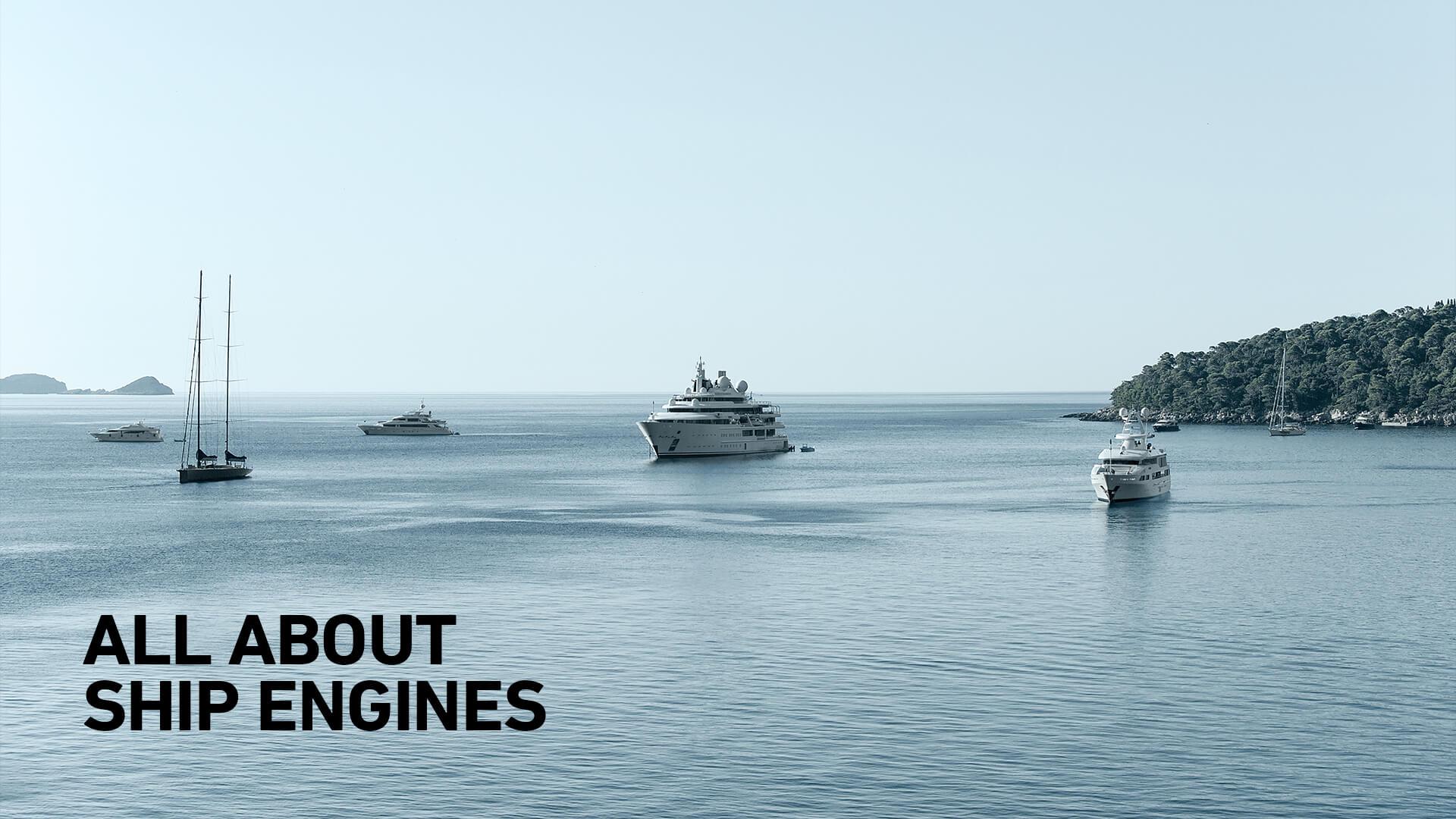All About Ship Engines

A ship engine, also known as a marine engine, is the chief propulsion unit that drives a ship or boat through the water. These engines are the heart of maritime vessels, powering everything from cargo ships to luxury cruise liners. They are designed to be highly reliable and efficient, with long service lives and the ability to operate continuously for extended periods of time. Along with this their rugged construction ensures they are able to withstand the harsh marine environment.
There is a lot of precision ensured by ship engine manufacturers while producing these giant beasts. Understanding how these engines function is essential for anyone involved in the shipping and transportation industries. In this article, we will discuss the nitty-gritty of ship engines and shed light on how they work.
Types Of Ship Engines
Depending on the power source, there are several types of ship engines. All of them come with their pros and cons. The choice of which engine to use depends on factors such as the size and intended use of the vessel, fuel availability, and environmental considerations.
Steam Engines
- Internal Combustion Engines
Gas Turbine Engines
Electric Motors
Stirling Engines
Steam Engines
These engines use steam to generate power and are often used on older vessels. Steam engines are efficient, reliable, and have a long service life.
Internal Combustion Engines
These engines burn fuel, such as diesel, gasoline, or natural gas, to generate power. They are widely used on modern vessels due to their high efficiency and reliability.
Gas Turbine Engines
Gas turbine engines use hot gases to drive a turbine, which generates power. They are commonly used on high-speed vessels, such as military ships or ferries, due to their lightweight design and ability to produce a high amount of power.
Electric Motors
These use electricity to power the ship’s propulsion system. They are highly efficient and produce low levels of noise and vibration, making them a popular choice for hybrid or electric-powered ships.
Stirling Engines
Stirling engines use cyclic compression and expansion of gas to generate power. They are not commonly used on ships due to their complexity and lower power output compared to other engine types.
Among all the types of engines, diesel engines are generally more commonly used considering the benefits they bring to the fore. Now let’s talk about the working mechanism of a ship's diesel engine.
Working Of Marine Diesel Engines
The working cycle of a marine diesel engine is a meticulous process, involving the conversion of fuel energy to mechanical energy. Let’s look at a step-by-step process of what helps these engines deliver magnanimous power.
The first step is where the fuel enters the engine through fuel and injectors and is mixed with air in the combustion chamber. The fuel-air mixture is ignited by a spark or high-pressure compression, which causes an explosion. The force of this explosion pushes a piston, which is connected to a crankshaft, turning it and generating mechanical power.
The mechanical power produced is then transmitted to a propeller, which turns and propels the ship through the water. The exhaust gases are expelled from the engine through an exhaust system.
To take care of the lubrication of the engine, oil is used which is circulated throughout the engine by a pump. The cooling system keeps the engine at a safe operating temperature by circulating water or coolant around the engine. Electrical power is generated by an alternator, which is connected to the engine, and used to power the ship’s systems and equipment.
Ships often have multiple engines, which can be operated in parallel to provide more power when needed or to allow for maintenance and repairs while still keeping the ship moving.
Now that we know about the working mechanism of a marine diesel engine, let’s talk in brief about the steps that go into the manufacturing of these robust engines.
Steps To Manufacturing Marine Engines
How an engine is manufactured from scratch is quite an intriguing process. It involves a lot of thorough research and precise execution. Let’s take a look at several stages involved.
- Design: The design process involves the creation of detailed drawings, specifications, and computer models to ensure that the engine will meet the requirements of the ship it will power.
- Materials Selection: The materials used to build a ship’s engine are carefully selected to ensure that they can withstand the high temperatures, pressures, and stresses generated by the engine.
- Casting and forging: The engine components are cast or forged from high-strength materials, such as steel or aluminum, using specialized equipment.
- Machining: The engine components are machined to precise specifications using computer-controlled milling machines, lathes, and other such equipment.
- Assembly: Once the components are manufactured, they are then assembled into a complete engine using specialized tools.
Final Thoughts
In this article, we talked in depth about the basics of ship engines, their types, working mechanism as well as the steps that go into their manufacturing. We hope the article helped you get a deep insight into all about engines powering marine vessels.




